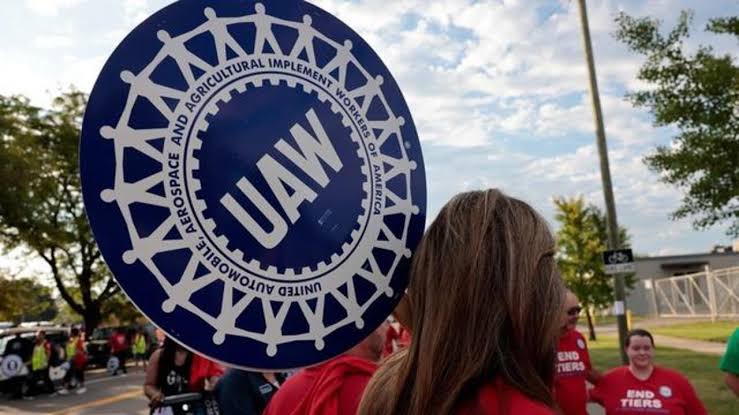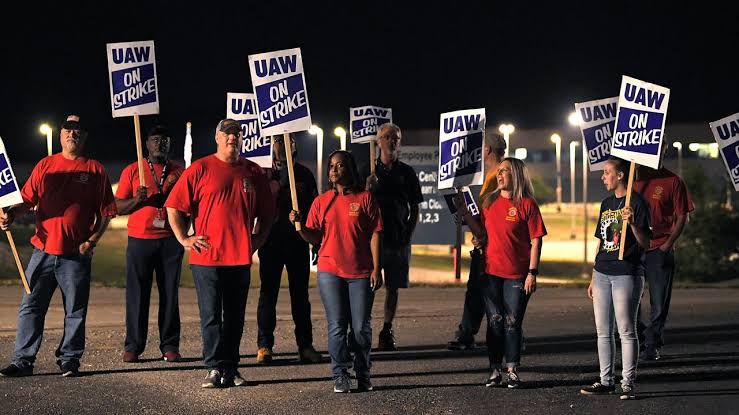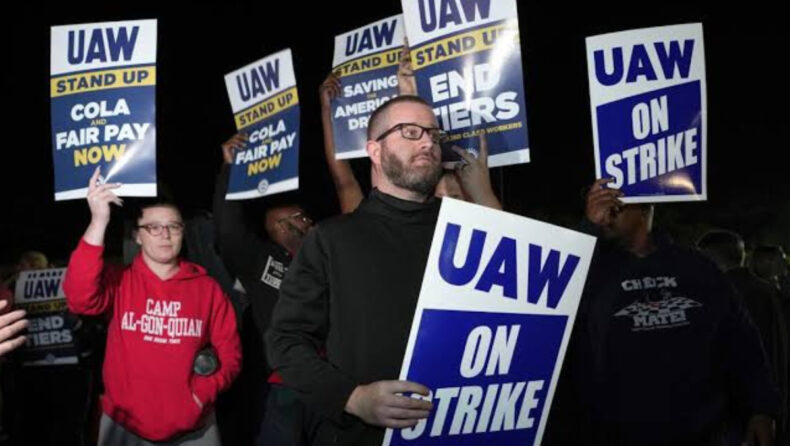In a historic turn of events, the United Auto Workers’ Union (UAW) has launched a massive strike against Detroit’s ‘Big Three’ automakers – General Motors (GM), Ford, and Stellantis (formerly Fiat Chrysler). The dramatic walkout, marked by rowdy honking and cheers at the arrival of the UAW leader, Shawn Fain, came after a last-minute push for negotiations failed to produce an agreement before the contract’s expiration. This strike, initiated at three factories simultaneously, is a significant moment in UAW’s history, and it reflects the union’s determination to secure better conditions for its members.
Table of Contents
A Legacy of Labor Struggles
The UAW’s legacy of fighting for the rights and benefits of auto workers dates back to its inception in 1935. Strikes have been a powerful tool for the union in securing better working conditions, fair wages, and comprehensive benefits for its members.
The current strike was triggered by a breakdown in contract negotiations between the UAW and the ‘Big Three.’ Despite last-minute efforts, negotiations failed to reach a resolution, forcing the union to take drastic action.
Simultaneous Strikes
For the first time in history, the UAW initiated strikes at one plant at each of the ‘Big Three’ companies. These targeted strikes are taking place at a GM factory in Wentzville, Missouri; a Stellantis facility in Toledo, Ohio; and a Ford plant in Wayne, Michigan, specifically affecting final assembly and paint operations.
Approximately 12,700 workers participated in the initial walkout, representing a fraction of the 150,000 auto workers represented by the UAW. However, the union has signaled that the strike could expand if the automakers don’t meet their demands. This strategic move keeps the pressure on the companies to negotiate in good faith.
Union’s Demands
Seeking Economic Justice
The UAW’s demands are anchored in the pursuit of economic justice. A substantial 40-percent wage increase is at the forefront of these demands, aimed at aligning auto workers’ earnings with the escalating CEO pay. This addresses a longstanding wage disparity issue that has troubled auto workers for years.

Equal Pay and Benefits
Equity is a central theme in the UAW’s demands. Another pivotal request is the elevation of pay and benefits for junior employees to mirror the compensation of their more seasoned counterparts. Currently, these experienced workers earn a top rate of approximately $32 per hour. Achieving pay parity is a fundamental goal for the union in these negotiations.
Industry-Wide Implications
The strike has already led to production halts across the ‘Big Three,’ causing disruptions throughout the automotive industry. Suppliers, dealerships, and local economies are feeling the impact. As the strike continues, it puts mounting pressure on the automakers to address the union’s demands. Losses from halted production can quickly accumulate, motivating both parties to find a resolution.
Presidential Involvement
The strike poses a challenge for President Joe Biden, who has aimed to secure support from organized labor as he gears up for his reelection campaign. Although the UAW has not yet endorsed Biden, he has engaged in discussions with UAW leadership and major automakers to monitor the ongoing negotiations.
Conclusion
The UAW’s historic strike against Detroit’s ‘Big Three’ is a testament to the union’s unwavering commitment to securing better conditions and economic justice for its members. As this strike unfolds, its impact extends far beyond auto plants, affecting the broader automotive industry and raising questions about wage disparity and workers’ rights. The resolution of this conflict will shape the future of auto workers and the automotive sector in the United States.














